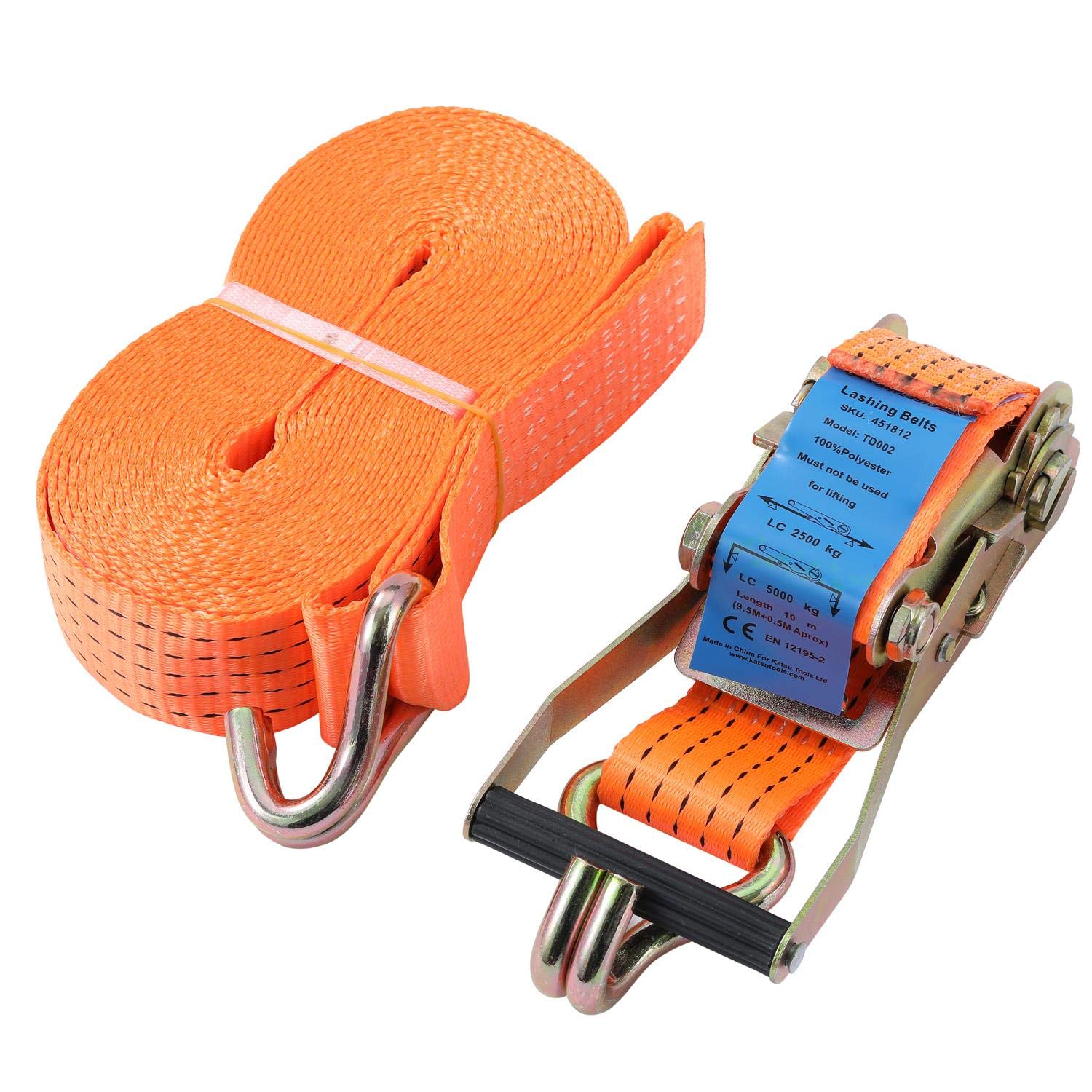A ratchet lashing belt (also known as a ratchet strap, tie-down strap, or ratchet tie-down) is a device used to secure and fasten cargo during transport. It is commonly employed in trucks, trailers, motorcycles, and other vehicles to prevent loads from shifting or falling during transit.
Key Components of a Ratchet Lashing Belt:
- Webbing Strap – Made from durable polyester or nylon, designed to withstand tension and abrasion.
- Ratchet Mechanism – A geared handle that tightens and locks the strap in place.
- Hooks or End Fittings – Typically made of steel, used to attach the strap to anchor points (e.g., D-rings, truck beds).
- Pawl & Gear System – Ensures the strap remains tight and prevents slippage.
How It Works:
- One end of the strap is hooked to an anchor point.
- The strap is looped over the cargo and fed through the ratchet.
- The ratchet handle is repeatedly pumped to tighten the strap.
- Once secured, the ratchet locks the strap in place under tension.
- To release, a lever disengages the pawl, allowing the strap to loosen.
Common Uses:
- Securing furniture, appliances, and boxes in moving trucks.
- Tying down motorcycles, ATVs, or vehicles on trailers.
- Fastening construction materials like lumber or pipes.
- Industrial and agricultural cargo stabilization.
Advantages:
- High Tensile Strength – Can handle heavy loads (often rated from 500 lbs to over 10,000 lbs).
- Adjustable & Secure – Ratchet mechanism allows precise tension control.
- Reusable & Durable – Unlike ropes or chains, straps are lightweight and easy to store.
Safety Tips:
- Always check the Working Load Limit (WLL) before use.
- Inspect straps for wear, fraying, or hook damage.
- Ensure hooks are properly secured to strong anchor points.
- Avoid over-tightening, which can damage cargo or the strap.











